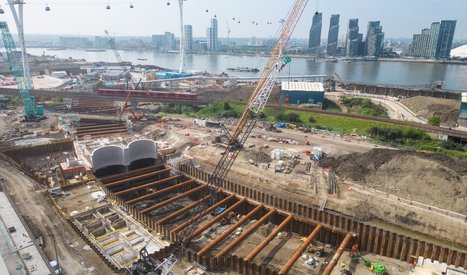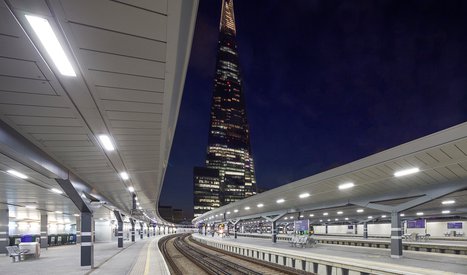Building a striking new hangar for one of the best-known aerospace manufacturers is no ordinary day in the office but, even with a host of iconic buildings under our belts, the creation of a new facility for Gulfstream took us to new heights.
This MRO (maintenance, repair and overhaul) facility in Hampshire would be housing some of the world’s most advanced private jets; so, it goes without saying that this fleet needed somewhere special to stay when not in use.
The brief was for a new 20,444-square-metre facility at TAG Farnborough Airport, to serve as Gulfstream’s main resource for customers travelling through the London area, Europe’s busiest business aviation hub. The hangar building itself is an amazing 236 metres long.
- Location
- Farnborough Airport
- Client
- Gulfstream
- Main Contractor
- VolkerFitzpatrick
- Engineer
- Hydrock
- Architect
- Gebler Tooth
- Tonnage
- 1,320

This structure is vast and required twenty-five, 40m long curved trusses to make up the roof, each consisting of four 10m welded up truss sections that were then bolted together and lifted with two cranes as a tandem lift. The hangar has three large doors to provide access for these incredible planes, with a 70m ‘piece small’ truss at the head of each door that was bolted together on the ground and lifted as one 70m long assembly. Due to its length the truss had to sit on temporary towers during erection to support it until the 40m curved roof trusses spanning in the other direction tied it all together. This was a complex part of the build process and it’s a credit to our team that we were able to meet these needs.

Adding to the challenge was the fact the build had to happen at a fully-functional airport, so we needed to work closely with ground staff and air traffic control to run things smoothly - our cranes couldn’t just go up without warning. We initially started work at night to aid the project progress, but eventually some of the flight paths were re-routed to make way for the build.
Despite various technical challenges, we were able to meet this project’s timetable and it’s now a key part of our incredible, and diverse, portfolio.




